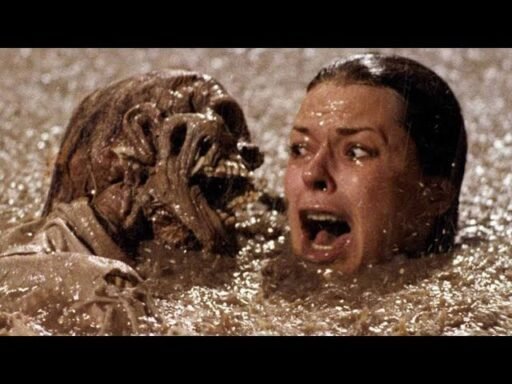The Origins of the Poltergeist Film and Its Controversial Production Choices
Since the early 18s Hollywood has tried their best to direct movies that give goosebumps to the audience, because of that the directors attempt possible approaches to create a horror scene, by adding scary graphics and horrific costumes. In the 1982 movie “Poltergeist,” directed by Tobe Hooper and produced by Steven Spielberg, stands as a seminal piece in the horror genre. The film’s plot revolves around the Freeling family, who move into an apparently untainted rural home, just to experience a progression of frightening occasions as malignant spirits torment them. The story’s sluggish development to the powerful mayhem that follows enraptured crowds and laid out “Poltergeist” as an exemplary with sickening dread film.
One of the most talked about parts of the film’s creation is the choice to involve real human skeletons in a few key scenes. This dubious decision was driven by functional contemplations as opposed to a longing to stun. At that point, real skeletons were all the more promptly accessible and practical contrasted with their plastic partners, which were costly as well as missed the mark on realism expected for the film’s extremely awful arrangements. Thus, the creation group decided on legitimacy, accepting it would improve the film’s creepy environment.
Cast and crew members have shared mixed reactions to this production choice. JoBeth Williams, in particular, expressed her discomfort upon learning about the real skeletons after filming the scary scene. In interviews, special effects artist Craig Reardon confirmed the use of real skeletal remains, making sense of the monetary limitations that drove this choice. Notwithstanding the disquiet it caused among the cast, the utilization of real skeletons in “Poltergeist” remains a characterizing component of the film’s heritage, contributing essentially to its persevering status in horror cinema.
The Ethical and Cultural Implications of Using Real Skeletons in Film
The use of real human skeletons in the 1982 movie Poltergeist has sparked significant ethical and cultural debate. Historically, the utilization of genuine human remaining parts in film and theater was not unfathomable, frequently because of the trouble and cost of securing realistic props. Poltergeist, in any case, carried this training into the standard spotlight, bringing up issues about the ethical limits of such choices in diversion.
At the point when Poltergeist was released, the revelation that real skeletons were utilized rather than counterfeit ones caused extensive public clamor. Crowds and pundits were isolated, with some survey it as a type of creative legitimacy, while others censured it as a gross lack of regard for the departed. This contention featured the flimsy line between inventive articulation and moral obligation, a line that movie producers should explore carefully
Experts in various fields have weighed in on the issue. Ethicists argue that using human remains for entertainment purposes without consent is inherently disrespectful and violates the dignity of the deceased. Anthropologists stand out on this point that different cultures have varying beliefs about the treatment of the dead, and using unconscious humans or parts in film can be seen as culturally insensitive or even sacrilegious. Film historians note that while the practice was more common in the past, modern sensibilities demand greater respect for human remains.
In the wake of the Poltergeist(Tymoff) controversy, there has been a noticeable shift in industry standards. Filmmakers are now more conscientious about the ethical implications of their choices, particularly regarding the portrayal and use of human remains. This shift reflects a broader cultural movement towards ethical responsibility in various forms of media and entertainment.
The influence of this controversy on modern filmmaking practices cannot be overstated. Today, there is an increased emphasis on ethical considerations, ensuring that the dignity of individuals, living or deceased, is preserved. This evolution marks a significant step forward in the responsible creation of art and entertainment, setting a precedent for future generations of filmmakers.







